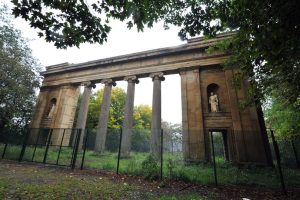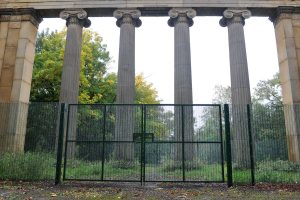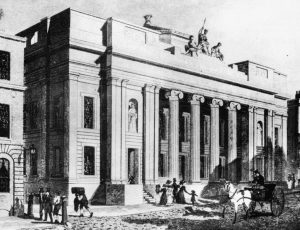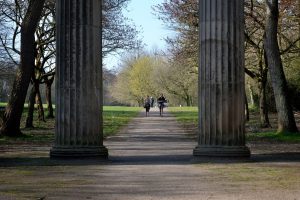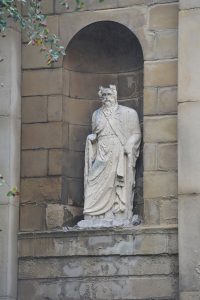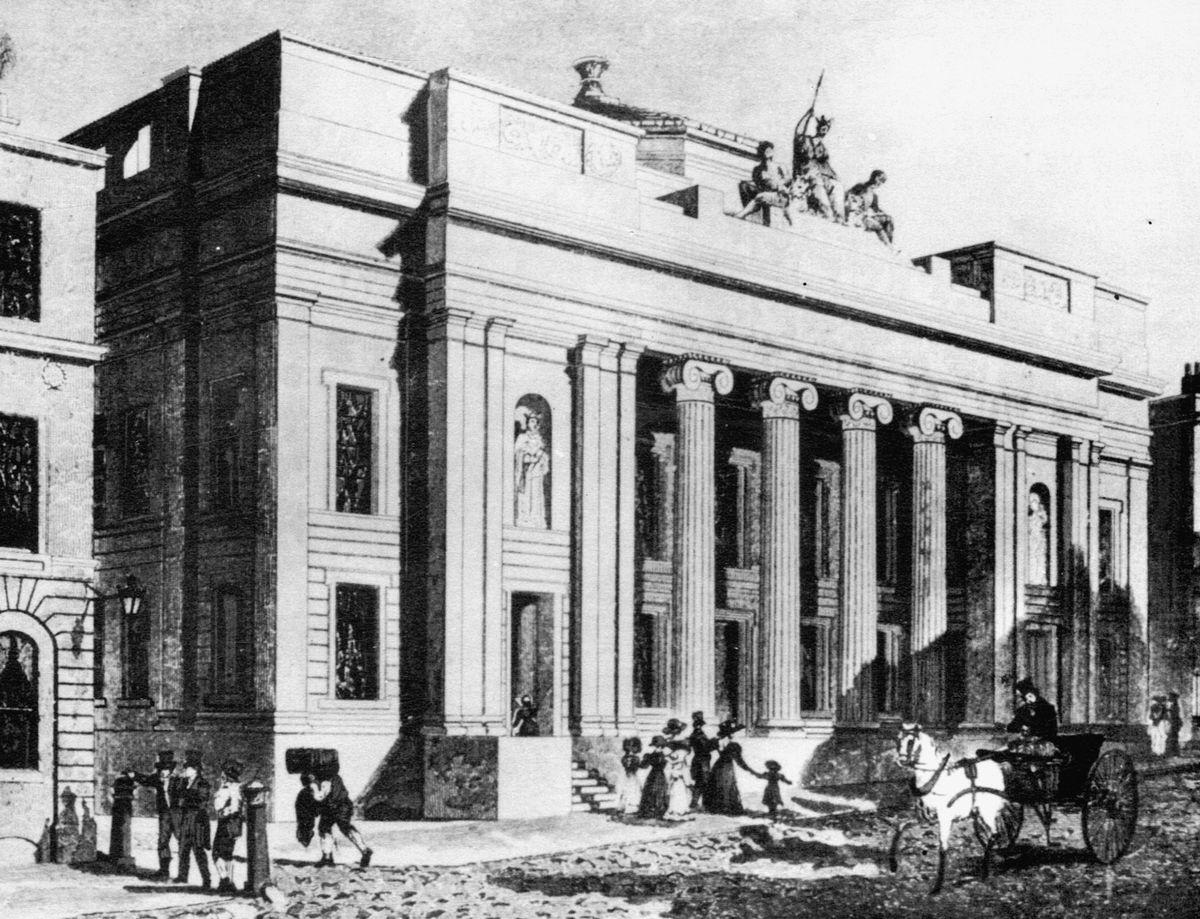
Old Town Hall, King Street, Manchester, late 19th cent.
The old Town Hall, photographed between 1878 and 1897, was situated at the junction of King Street and Cross Street and was built in 1825. The entrance and staircase on King Street was added in 1838. In 1878 the building became the Free Reference Library. It was demolished during the early 20th century with the four pillars seen here, moved to the entrance of Heaton Park, home of the Earls of Wilton.
The towering Grecian-style columns were once the face of democracy in Manchester – an imposing facade welcoming visitors to the city’s old town hall.
Now the crumbling structure stands sealed off in Heaton Park.
But council bosses have now moved to reassure the public over the future of the free-standing sequence of columns near to the park’s boating lake.Once part of the old Manchester town hall, the facade has now been sealed off for four years
The M.E.N. took up the case after readers got in touch to ask: “Is it just being left to rot?”
The council described the colonnade as an ‘important part of Manchester’s history and a key heritage asset within Heaton Park’ and confirmed its restoration was a ‘long-term ambition’.
The colonnade dates back to 1822.
Designed by Francis Goodwin, it formed the grand front of Manchester’s first town hall on King Street.
Civic leaders in Manchester say plans are being developed to carry out a restoration project to save and reopen the Heaton Park colonnade.Currently enclosed with barriers due to safety concerns, the council said surveys have already been undertaken to determine the exact nature of work needed.Stone by stone, it was reassembled in Heaton Park in 1912 as a prominent feature, opening at roughly the same time as the park’s boating lake.
The council said the four sandstone columns, joined by overhead stone blocks and including statues at both ends, remained enclosed by security fencing for safety reasons, but stressed the structure was fundamentally stable and not at risk of any collapse.Records show the building quickly became too small for Manchester’s burgeoning population and powers and the seat of democracy moved to the current town hall off Albert Square, when construction work finished in 1877.When plans to tear down the old town hall were mooted, a campaign began to save the facade, with renowned Middleton architect and draftsman Edgar Wood said to be a leading voice.